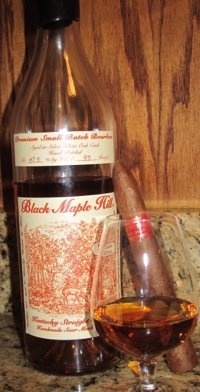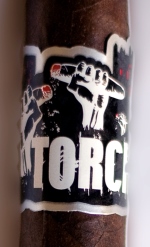Stogie Guys Friday Sampler No. 348
30 Aug 2013
As we have since July 2006, each Friday we’ll post a mixed bag of quick cigar news and other items of interest. Below is our latest Friday Sampler.
 1) Joya de Nicaragua announced yesterday that José Blanco, the company’s senior vice president, has stepped down and will be leaving Estelà for “his roots in the Dominican Republic.†While Blanco’s two-year contract with the oldest cigar maker in Nicaragua will not be renewed, he leaves behind his eponymous, critically acclaimed CyB cigar line (formerly Cuenca y Blanco). Some have speculated CyB’s sales never lived up to expectations—notwithstanding virtually unanimous praise from the online cigar community. The terms of Blanco’s departure did not include a non-compete clause, and StogieGuys.com expects (and hopes) he will continue to work in the industry. Blanco formerly worked at La Aurora in the Dominican for 29 years and is well known for his tasting seminars and extensive travel to cigar shops.
1) Joya de Nicaragua announced yesterday that José Blanco, the company’s senior vice president, has stepped down and will be leaving Estelà for “his roots in the Dominican Republic.†While Blanco’s two-year contract with the oldest cigar maker in Nicaragua will not be renewed, he leaves behind his eponymous, critically acclaimed CyB cigar line (formerly Cuenca y Blanco). Some have speculated CyB’s sales never lived up to expectations—notwithstanding virtually unanimous praise from the online cigar community. The terms of Blanco’s departure did not include a non-compete clause, and StogieGuys.com expects (and hopes) he will continue to work in the industry. Blanco formerly worked at La Aurora in the Dominican for 29 years and is well known for his tasting seminars and extensive travel to cigar shops.
2) For those in the Chicago area, Blue Havana is hosting a RoMa Craft Tabac event this evening from 5-9 pm. The gathering will include deals on RoMa’s Intemperance, CroMagnon, and Aquitaine blends. RoMa produces the forthcoming Ouroboros and Abaddon blends for Blue Havana, both of which are expected to debut in September.
3) Inside the Industry: Hammer + Sickle is introducing the mild Icon Series by Hendrik Kelner, made at Kelner’s Tabacos Dominicanos factory with a Connecticut shade wrapper and Dominican binder and filler. In addition to José Blanco stepping down, Joya de Nicaragua announced a number of promotions by its Board of Directors this week, including the election of Juan Ignacio MartÃnez, son of longtime Joya head Dr. Alejandro Martinez Cuenca, as executive president.
4) Around the Blogs: Cigar Inspector inspects the Punch Rare Corojo Champion. Cigar Fan fires up the CLE Corojo. Stogie Review reviews the CAO Flathead. Tiki Bar kicks back with a Miami Cigar Kilo. Stogie Fresh smokes the Avo La Trompeta.
5) Deal of the Week: This Silver Tray Sampler has five full-bodied sticks for just $27. The deal includes the Cabaiguan Guapos Maduro, a La Flor Dominicana Air Bender, a La Sirena, one Asylum 13, and the Punch Gran Puro Sesenta.
photo credit: Stogie Guys

 The name means “The Cedar,†which refers to the ancient Mediterranean cedar trees which dot the mountains of Lebanon, some of which date back nearly 2000 years. “I chose the cedar tree because to me it embodies eternity… I want ‘The Cedar’ to memorialize those who have fallen for the freedom that every American enjoys,†Elboustani says. (Spanish) cedar also happens to be the type of wood most closely associated cigar making and proper cigar storage.
The name means “The Cedar,†which refers to the ancient Mediterranean cedar trees which dot the mountains of Lebanon, some of which date back nearly 2000 years. “I chose the cedar tree because to me it embodies eternity… I want ‘The Cedar’ to memorialize those who have fallen for the freedom that every American enjoys,†Elboustani says. (Spanish) cedar also happens to be the type of wood most closely associated cigar making and proper cigar storage.
 Few expected Sam Leccia to stay away from the cigar industry any longer than he was legally obligated to. Leccia fans will recall he originally tried to jump back in the business in 2011 with a
Few expected Sam Leccia to stay away from the cigar industry any longer than he was legally obligated to. Leccia fans will recall he originally tried to jump back in the business in 2011 with a  By the way, the same is true of cigars. Some cigar makers have own their factory, while other brand owners contract someone else to make it for them. But for both bourbons and cigars there’s a wide range of those who fall in the latter category. Some companies are completely upfront about who makes their cigars (they may be more like co-producers), while others are completely secretive. Fortunately, for cigars, the top-secret undisclosed factory is the rarity.
By the way, the same is true of cigars. Some cigar makers have own their factory, while other brand owners contract someone else to make it for them. But for both bourbons and cigars there’s a wide range of those who fall in the latter category. Some companies are completely upfront about who makes their cigars (they may be more like co-producers), while others are completely secretive. Fortunately, for cigars, the top-secret undisclosed factory is the rarity. At this summer’s show, I met lots of people I didn’t know. I was, for example, mightily impressed by the men behind
At this summer’s show, I met lots of people I didn’t know. I was, for example, mightily impressed by the men behind 

 Patrick Ashby
Co-Founder & Editor in Chief
Patrick Ashby
Co-Founder & Editor in Chief Patrick Semmens
Co-Founder & Publisher
Patrick Semmens
Co-Founder & Publisher George Edmonson
Tampa Bureau Chief
George Edmonson
Tampa Bureau Chief